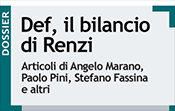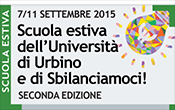Ultimi link in questa sezione
Un portale sulle università in crisi
Last year, for six months, a broad strike paralyzed most universities in France, from February 2nd to the end of May, against a decree enforcing a new law called LRU (Law for Responsible Universities). 76 out of 82 universities organized General Assemblies at which most teachers and students voted to go on strike. In France, among 90,000 teachers, 2.2 million students and 50,000 employees who make universities work, not everyone stopped working or studying – but most of them had to discuss and debate, often fiercely and bitterly, about the future of National Education.
In contrast to preceding years, teachers led the strike while students and employees followed. Even in Law Schools, known to be traditionally State-respectful and Law-abiding communities, well-respected protesting professors were rife. Thirty-three smaller technical schools, known as IUT (Instituts Universitaires de Technologie), also decided to join the strike, and a National Committee for Universities on strike (CNU) tried to coordinate all these voices to build a coherent and unified structure challenging the government’s program. Only a few months after Italy and Greece, France was dealing with the most massive and determined teachers’ movement since 1968. If it did not succeed, at least it shed light on the universities’ wounds.
Autonomy, another word for Dependence?
In 2009, teachers were opposed to the governmental decree reshaping their status for the first time since 1984. According to this decree, their working-time and professional tasks could be changed at the university president’s will: they could teach more for the same wage if the quality of their research didn’t meet unexplained academic standards, made to work on other campuses against their will if it was needed, and forced to cooperate with private corporations if their university’s board of directors, where executives from for-profit firms could sit, decided so. In a country were education is still seen as a “public good”, many found these pills rather difficult to swallow.
But this decree was only one of the ways to enforce LRU, voted in the French Congress in 2007 and seen by President Sarkozy as an essential reform. LRU’s keystone was university “autonomy”: autonomy for university educational programs, autonomy for their management, autonomy for their budgets. Many teachers and researchers saw – and still see – this “autonomy” as a nice old word for a new set of dependencies: professional dependence upon university presidents, financial dependence upon private funding from non-academic foundations connected to profit-driven corporations, academic dependence upon nationally renowned universities able to attract the best students and teachers.
Therefore, one of the major threats of “autonomy” was that it would tremendously increase social and economic discrepancies between campuses. A few elite universities, gathered into a handful “Pôles d’excellence”, would gain international recognition, while most others would be forced to cut their budgets, stop recruiting teachers and select economically viable scientific tracks to the detriment of humanities. But LRU was not the first step in this direction.
The long-distance Mammoth trimmers and the economic crisis
Behind last year’s political crisis lurks a more profound social and economic crisis: the trend toward what is called “privatization” in France is not just a current fashion but a long lasting economic shift that is transforming a state-managed and nationally centralized educational system – with all its flaws – into locally ruled islands compelled to build more and more bridges toward departmental and regional marketplaces. This new model, said to be more adapted to today’s economic realities and to educational budgets facing crisis, is deepening preexisting inequalities.
First, the most efficient way to reduce educational budgets is to cut payrolls: in 2008, 11,500 teachers lost their jobs; 13,500 in 2009 (including 900 in universities); 16, 000 in 2010. This program is based on the idea that 50% of retiring State employees shouldn’t be replaced. Therefore, classes are overwhelmed with students (sometimes 500 or even 1,000 in amphitheaters in the first year) that are left on their own, without any proper direction. Sitting on the other side of the desk, young assistants often feel like tamers – but untrained tamers, because Ph. D. students can teach (for the first time) with as little as 10-days training. Even this short training is often dispensed with or it is unrelated to the young assistant’s needs. Ten years ago, socialist Prime Minister Claude Allègre (1997-2000) had already said he wanted to “trim the fat off the Mammoth” – the “Mammoth” is Education, and its “fat” is nicely trimmed every year.
Second, diplomas are more and more forged according to specific employer needs — a “licence professionnelle chargée de clientèle particuliers en banque-assurance”, co-organized with Crédit Agricole, Groupama, Crédit Mutuel and BNP — so they don’t help students find or change jobs, develop general skills and abilities or avoid unemployment. It ties them to a narrow set of workplaces and increases their dependence on employers. In the 1980’s professional diplomas for skilled workers were widely introduced into public schools. Before that, corporations like Renault or Peugeot had their own training schools but the new formula allows them to outsource their training costs. Little by little, it is extending to the whole educational system.
Neither the LRU nor the impact of the 2008 economic crisis really gave birth to that process, although both of them greatly contributed to its acceleration. In fact, “university crisis” has been going on for years in France, and recent reforms, instead of healing wounds, spread salt on them.










